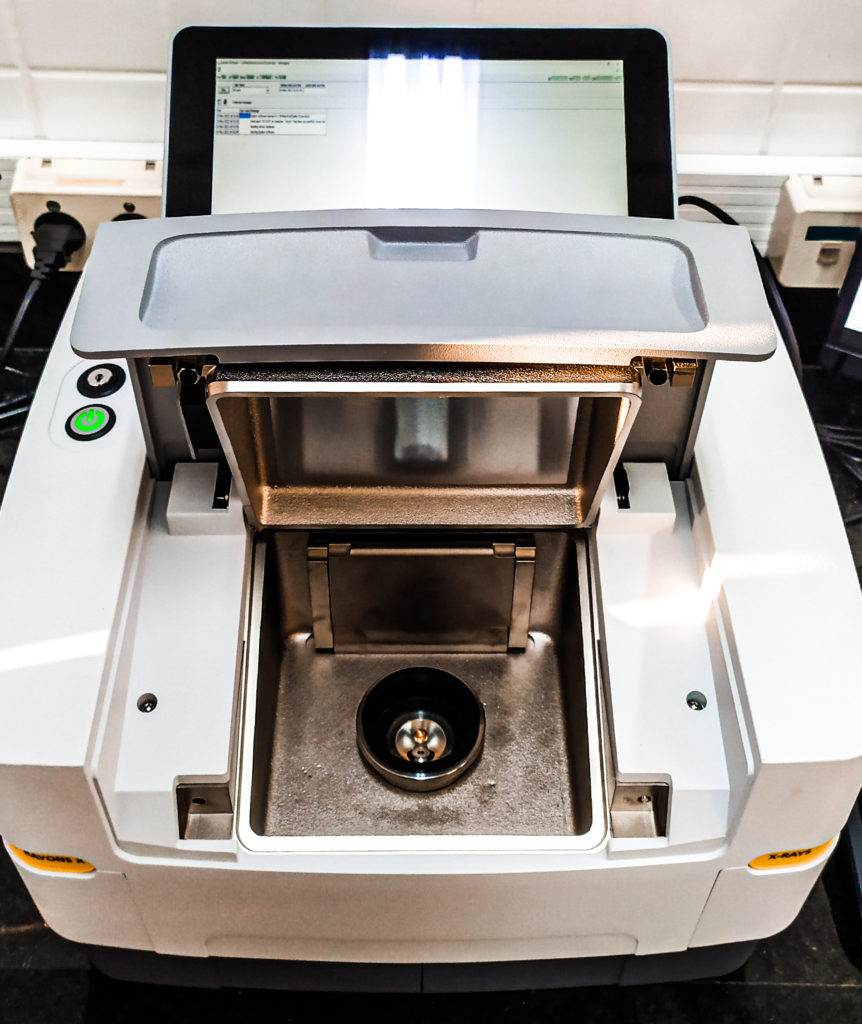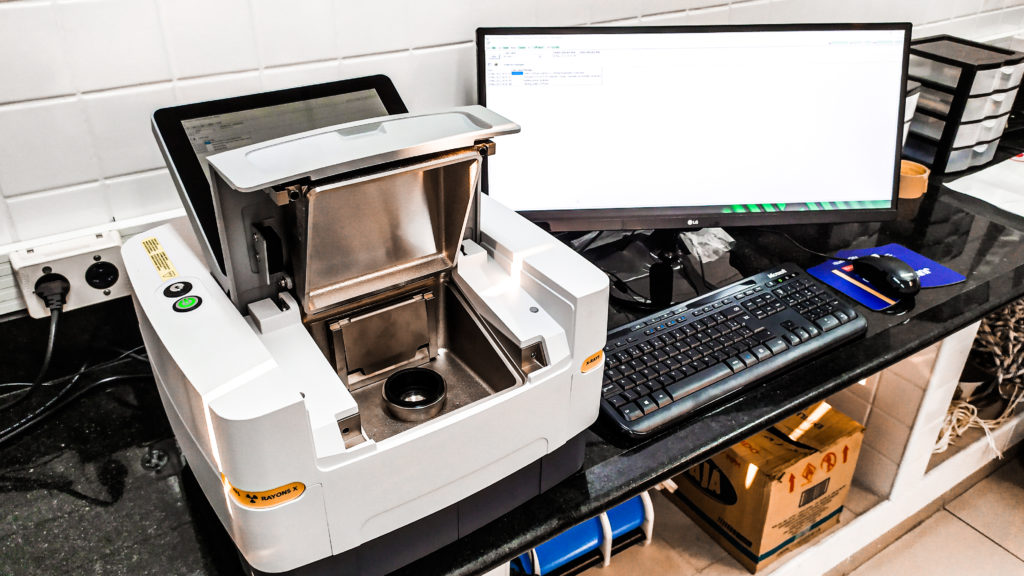
X-ray fluorescence (XRF) spectrometers are used to determine the elemental chemical composition of a wide range of materials (solids, liquids, pastes and powders). The techniques used for analysis can be associated with simple sample preparation processes and allow their reuse. Malvern Panalytical Epsilon 1 is an easy-to-operate, energy-dispersive XRF analyzer that produces fast, accurate data through standardless (semi-quantitative/scanning) analysis. This method allows robust characterization of the elemental composition of varied samples without the need to develop specific calibrations.
Our laboratory accepts any samples with maximum dimensions of 15 x 12 x 10 cm (WxDxH) and minimum mass of approximately 2g. Standardless analyses are performed using the Omnian system, a combination of software and configuration standards that establishes trends and allows the investigation of a diverse of samples without dedicated calibration. The system allows the semi-quantitative (mass/mass) determination of chemical elements with an atomic number greater than that of Sodium (Z = 11).
Our laboratory has specific preparation and analysis protocols for soil and sediment samples for environmental and paleoenvironmental studies. We have an automatic planetary mill Pulverisette 7 from Fritsch GmbH and agate mortars for grinding and homogenizing samples. We also have a special press for compacting powders into cups with thin plastic films. The analyses take between 10 and 40 minutes per sample and the monitoring of the quality of the analyses is performed by reading reference standards of known composition distributed among the measurements of interest.


